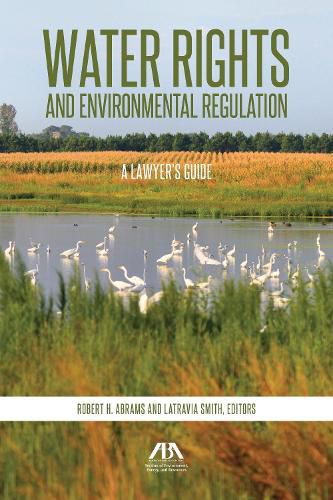Readings Newsletter
Become a Readings Member to make your shopping experience even easier.
Sign in or sign up for free!
You’re not far away from qualifying for FREE standard shipping within Australia
You’ve qualified for FREE standard shipping within Australia
The cart is loading…






While state law almost exclusively governs the allocation of surface waters in the United States, there are also reserved rights, an important class of water rights created by federal law. Written by practitioners in private practice, government, and academia, each with extensive experience in the area, Water Rights and Environmental Regulation: A Lawyer’s Guide begins by looking at the rights to use water based on both state and federal law, as well as the issues involved in waters that cross state boundaries and in the shared control of water between the U.S. and Mexico and Canada. Further exploring the extent of federal environmental law impacts on water rights, the book discusses the federal agencies with major water use impacts, including the U.S. Bureau of Reclamation, the U.S. Army Corps of Engineers, and other agencies whose actions, particularly projects they operate or lands that they manage and regulate, have a considerable impact on state law water rights and the execution of water projects. Central to any discussion of the federal impact on water rights are the major environmental laws. Individual chapters cover these landmark environmental statutes: the Endangered Species Act, the Migratory Bird Treaty Act, the Clean Water Act, the Wilderness Act designations and the wild and scenic rivers designations, and the National Environmental Policy Act. Finally, the book concludes by considering cases where water rights have been taken by governmental action without compensation.
$9.00 standard shipping within Australia
FREE standard shipping within Australia for orders over $100.00
Express & International shipping calculated at checkout
While state law almost exclusively governs the allocation of surface waters in the United States, there are also reserved rights, an important class of water rights created by federal law. Written by practitioners in private practice, government, and academia, each with extensive experience in the area, Water Rights and Environmental Regulation: A Lawyer’s Guide begins by looking at the rights to use water based on both state and federal law, as well as the issues involved in waters that cross state boundaries and in the shared control of water between the U.S. and Mexico and Canada. Further exploring the extent of federal environmental law impacts on water rights, the book discusses the federal agencies with major water use impacts, including the U.S. Bureau of Reclamation, the U.S. Army Corps of Engineers, and other agencies whose actions, particularly projects they operate or lands that they manage and regulate, have a considerable impact on state law water rights and the execution of water projects. Central to any discussion of the federal impact on water rights are the major environmental laws. Individual chapters cover these landmark environmental statutes: the Endangered Species Act, the Migratory Bird Treaty Act, the Clean Water Act, the Wilderness Act designations and the wild and scenic rivers designations, and the National Environmental Policy Act. Finally, the book concludes by considering cases where water rights have been taken by governmental action without compensation.